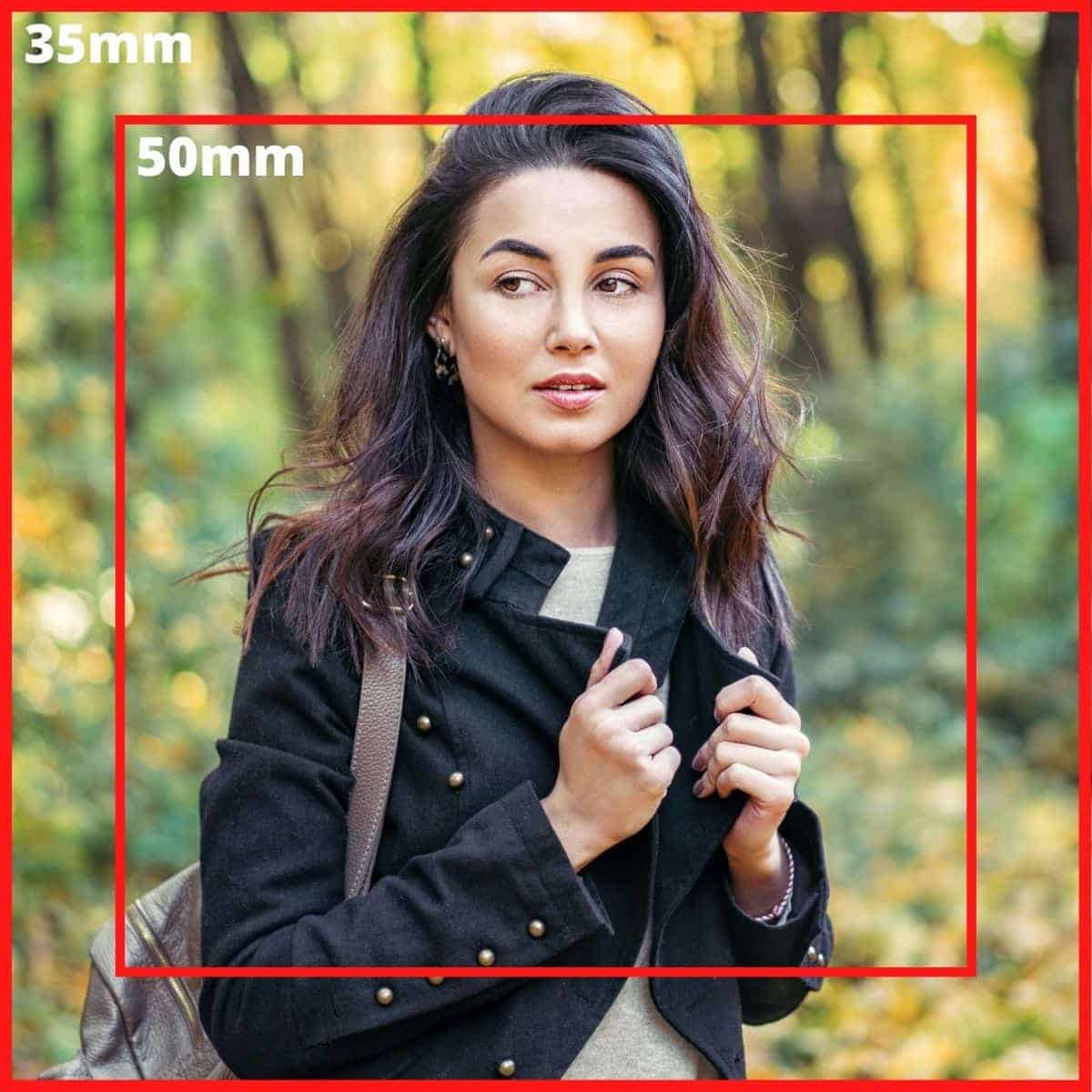35mm and 50mm are two popular focal lengths for prime lenses. While both are excellent, learn why you’d choose one over the other.

If you’re currently using a kit or zoom lens, getting a prime lens can offer many benefits. A prime lens means you’ll have a fixed focal length.
Related:
However, prime lenses generally have larger maximum apertures, which leads to better low-light performance. It also provides a beautiful blur when using a large aperture.
With a kit lens, the maximum aperture is around f/3.5 or f/4. Higher-end zoom lenses can go as big as f/2.8.
Related: Which camera has the fastest shutter speed?
However, prime lenses open wider, as you can find maximum apertures of f/1.8, f/1.4, or f/1.2.
During your search for a prime lens, you’ll come across two popular options, the 35mm and 50mm.
Before diving into each one, there are a few things to consider.
First, prime lenses have fixed focal lengths, which means you need to move around. You won’t have the same flexibility as a zoom lens.
Related: How to use framing in photography
The other factor to consider is your camera’s sensor. Full-frame cameras will utilize the full 35mm or 50mm focal length.
However, crop sensor cameras will have a crop factor of 1.5x. The exact number depends on the camera and manufacturer.
That means a 35mm will be equivalent to 52.5mm, and a 50mm will be about 75mm.
Related: How to become a successful freelance photographer
With that said, learn the benefits and drawbacks of the two focal lengths so you can choose the right one for you.
35mm pros and cons
The 35mm is a versatile wide-angle lens. It’s one of the most popular lenses because it works well for all types of photography.
While it’s an incredible lens, it’s not perfect. The following are the pros and cons of the 35mm lens.
Pros
- Wider field of view.
- More flexibility.
- You can get closer to your subject.
- Very little distortion.
A 35mm focal length with a full-frame sensor provides a field of view of 54.4 degrees horizontally. With a wider field of view comes more flexibility and versatility.
For portrait photography, you can capture everything from full-body portraits to headshots.
Landscape, architecture, and street photographers can also benefit from the versatility of a wide-angle lens.
You can fit more into the frame and you’ll have the choice to crop parts of the image out.
Related: What’s a polarizing filter?
Cons
- Distortion with close-up portraits.
- Not the smallest lens.
- Often more expensive than 50mm lenses.
While the 35mm focal length is incredible, it does have drawbacks. With a 35mm lens, you’ll have a little bit of distortion.
If you capture a close-up headshot, it’ll be more obvious than a full-body portrait.
Additionally, the bokeh won’t be as good as 50mm when comparing the same aperture because the 50mm offers more separation from the background.
Another drawback is that 35mm lenses are generally longer than 50mm lenses, which means they’ll take up a little more space in your camera bag.
50mm pros and cons
The 50mm is a short telephoto lens. It doesn’t offer the same wide-angle view, but it’s a versatile lens, which is how it became known as the nifty fifty.
Related: How to clean your camera lens
The following are the pros and cons of the 50mm lens.
Pros
- Closer view of your subject.
- More bokeh.
- Small and lightweight.
- Most are cheaper than 35mm lenses.
A 50mm lens provides a horizontal field of view of 39.6 degrees with a full-frame sensor.
The main benefit of a 50mm lens is that it’s closer to a traditional portrait focal length of 85mm. It also gives you a tighter crop without moving closer to your subject.
A tighter crop is beneficial for eliminating distracting elements surrounding your subject and capturing a more intimate image.
When you use the largest aperture with a 50mm lens, you’ll capture incredible separation between your subject and the background. It leads to beautiful blur and bokeh.
50mm lenses are also generally more compact and lightweight, making traveling with them easier.
Related: The best memory card readers in 2021
Cons
- Tighter crop can make it difficult to use in tight spaces.
- Not as flexible as 35mm.
If you’re shooting in a tight space without the flexibility to move around, capturing great images with a 50mm lens will be challenging.
It’s not as flexible as the 35mm, so you’ll need more space to use it successfully.
While the nifty fifty, a 50mm f/1.8 lens, is cheaper than a 35mm lens, larger apertures are generally more expensive.
Which is better?
35mm and 50mm are excellent focal lengths. However, the one you choose depends on your needs.
Related: Which cameras have in-body image stabilization (IBIS)?
If you can only choose one lens, 35mm is the best choice because it’s more versatile. You can fit more into the frame and crop the image to fill the frame.
Frequently asked questions
Is 35mm or 50mm better for portrait photography?
While both options work well for portraits, 50mm will provide more separation, background blur and offer less distortion. A 50mm will take better portraits.
Is 35mm or 50mm better for street photography?
35mm lenses are better than 50mm lenses for street photography because they capture a wider field of view. It’s more flexible and allows you to capture buildings, people and feature more elements to tell a better story.
Should I have both a 35mm and 50mm lens?
You don’t need both a 35mm and 50mm lens. Instead, get a 35mm lens first because it offers the most versatility. If you need a longer lens, get a telephoto lens, such as an 85mm or 135mm. An 85mm or 135mm paired with a 35mm lens gives you a wide and close-up view.
Conclusion
35mm and 50mm are two excellent focal lengths. Overall, it’s a close call because both focal lengths have strong advantages and disadvantages.
A 35mm is slightly better because it’s more versatile. However, consider the type of photos you take to make a decision.
Featured image courtesy of Canva.

